Introduction to Gobustan
Located just 64 kilometers southwest of Baku, Gobustan is a unique and historically rich region of Azerbaijan that offers a window into the country’s ancient past. Gobustan is best known for its impressive collection of rock engravings, mud volcanoes, and archaeological sites, making it a UNESCO World Heritage site and one of Azerbaijan’s most fascinating destinations. The region’s landscape is a captivating mix of arid desert and rocky plateaus, providing a dramatic backdrop for its ancient petroglyphs and historical landmarks.
This Gobustan travel guide will take you through the top attractions, outdoor adventures, and practical tips for exploring this extraordinary destination, ensuring you make the most of your journey into Azerbaijan’s ancient history. Baku fire tour
Top Attractions in Gobustan
1. Gobustan National Park
Gobustan National Park, also known as Gobustan Rock Art Cultural Landscape, is the crown jewel of the region and one of the most important archaeological sites in Azerbaijan. The park is home to over 6,000 rock carvings, or petroglyphs, that date back as far as 40,000 years. These ancient engravings depict scenes of hunting, dancing, and daily life, providing a fascinating glimpse into the prehistoric cultures that once inhabited the area.
Visitors to the park can explore the numerous rock shelters and caves where these petroglyphs are located, as well as the on-site Gobustan Museum, which offers detailed exhibits about the history and significance of the site. For history enthusiasts and nature lovers alike, Gobustan National Park is an unforgettable destination.
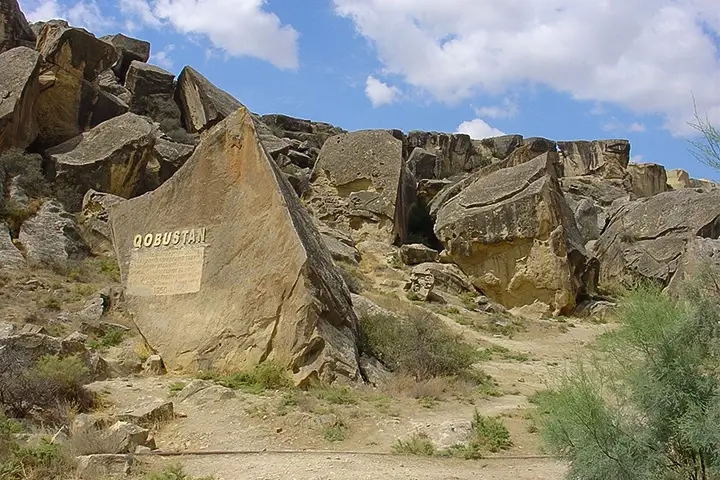
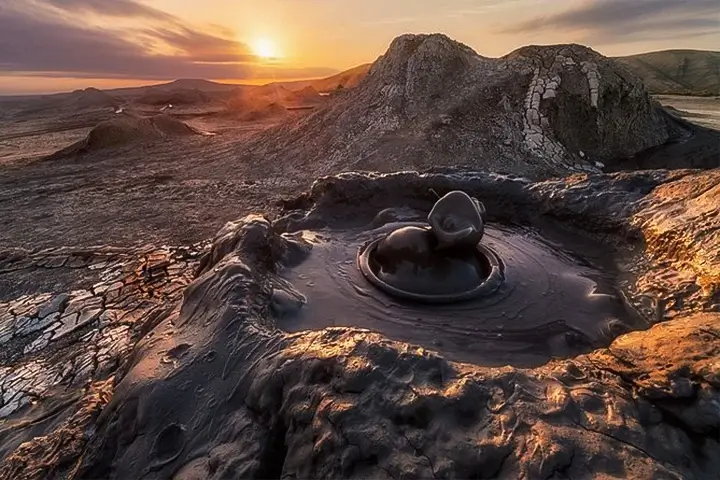
2. Gobustan Mud Volcanoes
Azerbaijan is home to nearly half of the world’s mud volcanoes, and the Gobustan region boasts some of the most impressive examples. These bubbling, gurgling volcanoes are a geological wonder and a must-see for visitors to the area. Unlike traditional volcanoes, mud volcanoes are formed by the eruption of mud and gas from underground, creating bizarre and fascinating landscapes.
The Gobustan mud volcanoes are located in a remote area, and the best way to visit them is by taking a guided tour. Watching the mud slowly bubble and ooze from the ground is a surreal experience, and the desolate, otherworldly landscape adds to the sense of adventure. Be sure to wear sturdy shoes and be prepared for a messy but unforgettable experience!
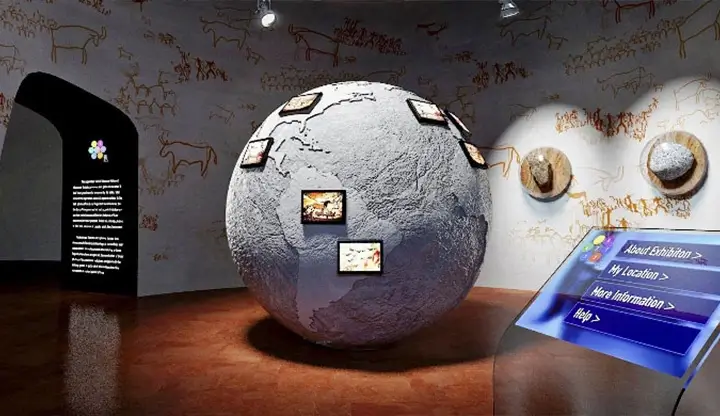
3. Gobustan Museum
Before or after exploring the petroglyphs in Gobustan National Park, a visit to the Gobustan Museum is highly recommended. This modern museum provides valuable context for the rock carvings and archaeological findings in the area, with interactive displays, 3D reconstructions, and informative exhibits. The museum covers a wide range of topics, from the prehistoric cultures that created the petroglyphs to the region’s geology and natural history.
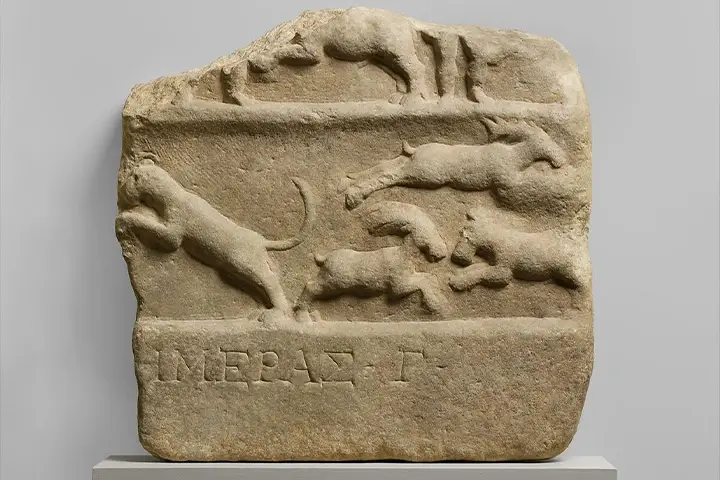
4. Roman Inscription
One of Gobustan’s more surprising attractions is a Roman inscription that dates back to the 1st century AD. Carved into the rocks by Roman soldiers, this inscription is the easternmost known presence of the Roman Empire. The Latin text is believed to have been left by the Roman army during the reign of Emperor Domitian. For history enthusiasts, this small but significant piece of history adds another layer to Gobustan’s rich archaeological heritage.
Natural Beauty of Gobustan
Beyond its historical and archaeological significance, Gobustan is a region of striking natural beauty. The area’s unique landscapes, shaped by millennia of geological activity, offer visitors a chance to explore Azerbaijan’s diverse natural environment.
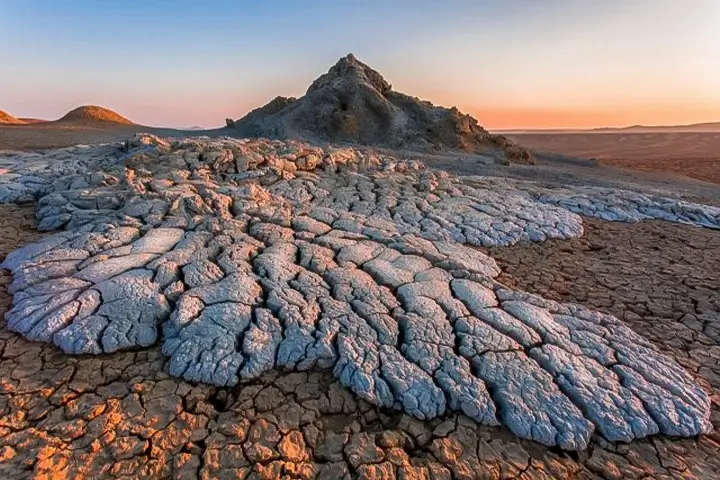
1. Gobustan Desert
The Gobustan Desert is a stark and dramatic landscape that stretches across the region. The arid terrain is dotted with rocky outcrops, mud volcanoes, and sparse vegetation, creating a visually stunning environment that feels almost otherworldly. Exploring the desert by foot or on a guided tour allows visitors to experience the rugged beauty of Gobustan up close, with the ancient petroglyphs and mud volcanoes serving as reminders of the region’s long and complex history.
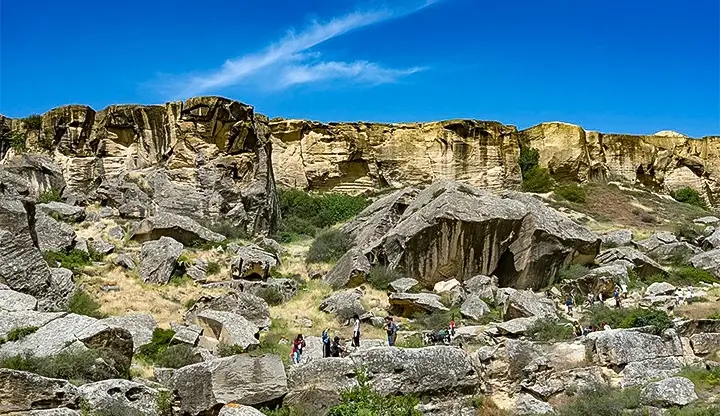
2. Beyukdash Mountain
Beyukdash Mountain is one of the most prominent natural features in Gobustan and is home to some of the region’s most significant petroglyphs. The mountain’s rocky slopes are covered in ancient carvings, depicting everything from human figures to animals and symbolic motifs. Hiking around Beyukdash Mountain offers visitors the opportunity to discover these petroglyphs while enjoying panoramic views of the surrounding desert landscape.
Outdoor Activities and Adventures
Gobustan is an ideal destination for outdoor enthusiasts, offering a range of activities that take full advantage of the region’s unique landscapes and natural wonders.
Hiking and Exploration
Gobustan’s rugged terrain is perfect for hiking and exploration. The region’s desert landscape, rocky hills, and mud volcanoes provide a challenging but rewarding environment for adventurous travelers. Several trails lead through the national park and surrounding areas, allowing hikers to explore the petroglyphs, rock formations, and scenic viewpoints.
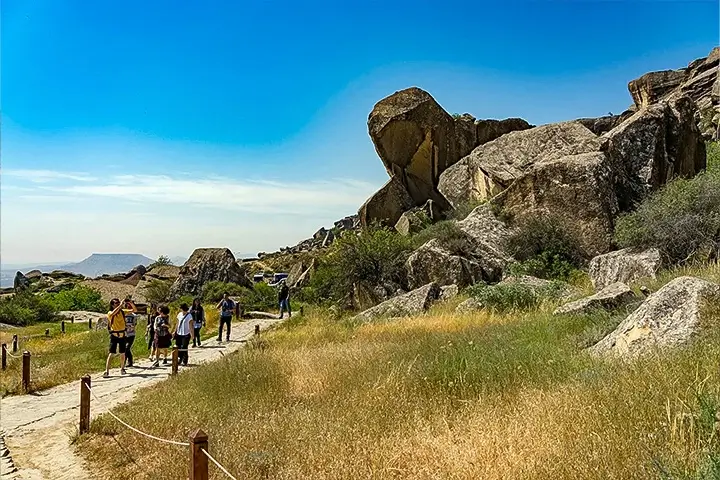
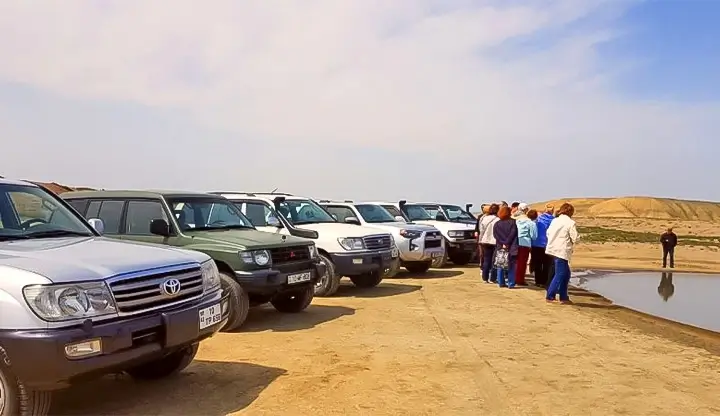
Off-Road Adventures
For those seeking a more adrenaline-fueled experience, off-road adventures are a popular way to explore Gobustan’s remote landscapes. Several tour operators offer 4×4 excursions that take visitors deep into the desert, navigating rough terrain and visiting sites that are difficult to reach on foot. These off-road tours often include stops at the mud volcanoes and other natural attractions, providing a thrilling way to experience Gobustan’s unique environment.
Cultural and Historical Significance
Gobustan’s cultural and historical significance goes far beyond its ancient rock carvings. The region has been a crossroads of civilizations for thousands of years, and its archaeological sites tell the story of the many peoples who have called this area home.
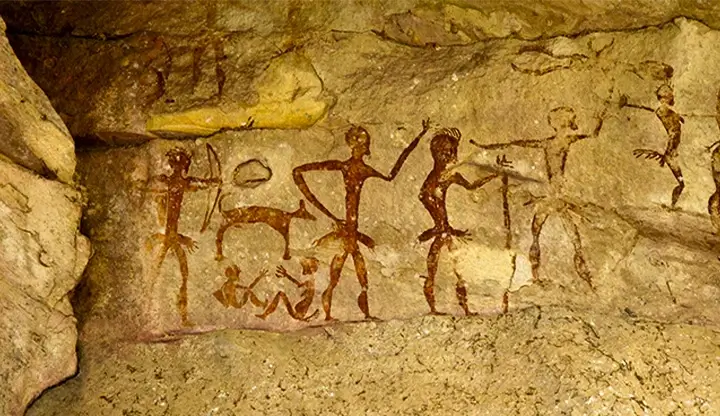
Ancient Petroglyphs
The petroglyphs of Gobustan are among the most important examples of prehistoric rock art in the world. These carvings, which depict scenes of hunting, dancing, and religious rituals, offer valuable insights into the lives of the ancient people who lived in the region. The petroglyphs are spread across several sites in the national park, with some of the most famous carvings located at Beyukdash Mountain, Kichikdash Mountain, and Jinghirdag Mountain.
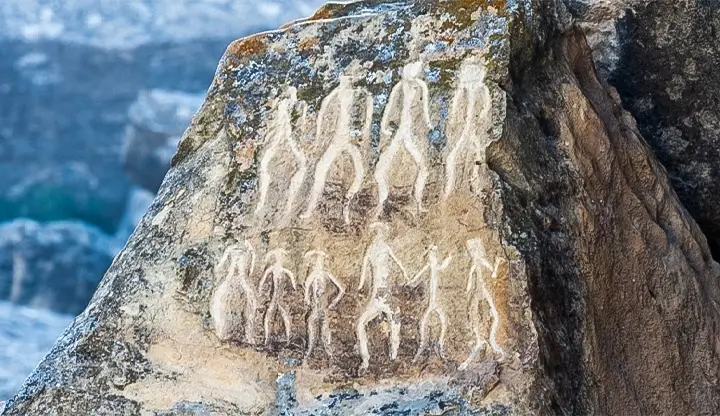
Ancient Burial Mounds
In addition to the petroglyphs, Gobustan is home to several ancient burial mounds or kurgans, that date back to the Bronze Age. These burial sites provide further evidence of the region’s long history of human habitation and are a testament to the ancient cultures that once thrived in the area. Visitors to Gobustan can explore these kurgans and learn about the burial practices and beliefs of the prehistoric peoples who built them.
Day Trips from Gobustan
Gobustan’s proximity to Baku makes it an ideal destination for a day trip or an extended exploration of the surrounding area. Several nearby attractions can be easily combined with a visit to Gobustan, offering travelers a chance to experience more of Azerbaijan’s diverse landscapes and historical sites.
1. Bibi-Heybat Mosque
Located just outside Baku, the Bibi-Heybat Mosque is a stunning example of Islamic architecture and one of Azerbaijan’s most important religious sites. The mosque, which was originally built in the 13th century, was destroyed during the Soviet era but has since been rebuilt in its original style. The mosque is a popular pilgrimage site and offers visitors a chance to explore its beautiful domes and intricate tilework.
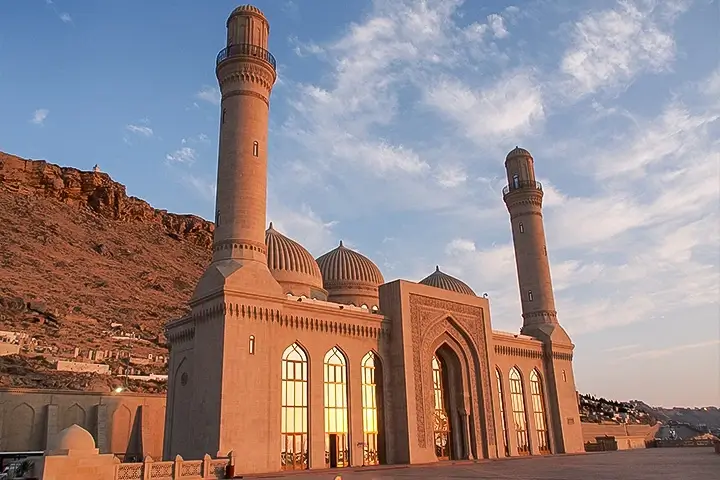
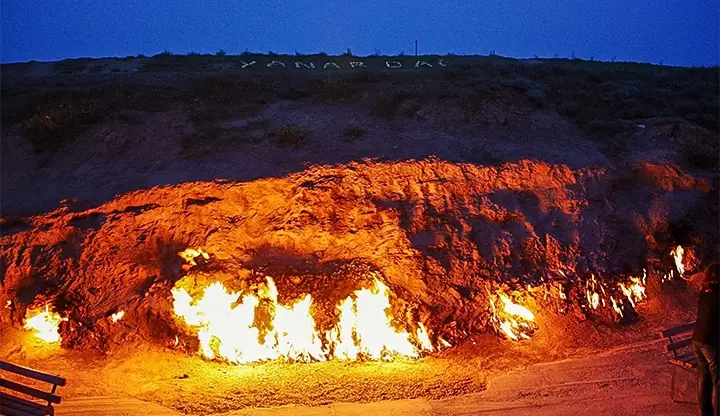
2. Yanar Dag (Burning Mountain)
Yanar Dag, or Burning Mountain, is a natural gas fire that has been burning continuously on a hillside near Baku for decades. The flames, fueled by natural gas seeping through the ground, create a mesmerizing spectacle that can be seen from a distance. Yanar Dag is one of Azerbaijan’s most famous natural landmarks and is often combined with a visit to Gobustan for a full day of exploration.
Practical Travel Information
How to Get to Gobustan
Gobustan is located about an hour’s drive from Baku, making it an easy day trip from the capital. The most convenient way to reach Gobustan is by car, and several tour companies in Baku offer guided tours to the region that include transportation. For independent travelers, it’s also possible to take a bus or minibus from Baku to Gobustan, though this option requires more planning and flexibility.
Where to Stay in Gobustan
While most visitors choose to visit Gobustan as a day trip from Baku, there are a few accommodation options in the region for those who wish to stay overnight. The nearby town of Sangachal offers a handful of small guesthouses and hotels, providing a comfortable base for exploring Gobustan and the surrounding area. Alternatively, staying in Baku provides more accommodation options and easy access to Gobustan for a day trip.
Best Time to Visit Gobustan
The best time to visit Gobustan is during the spring (April to June) and autumn (September to November) months when the weather is mild and pleasant. Summers in Gobustan can be extremely hot, with temperatures often exceeding 35°C (95°F), making outdoor exploration more challenging. Winters are generally mild, though temperatures can drop, especially at night. Visiting during the shoulder seasons allows for a more comfortable experience while avoiding the peak summer heat.
Conclusion
Gobustan is a destination that offers a unique blend of history, culture, and natural beauty. From its ancient petroglyphs and mud volcanoes to its dramatic desert landscapes, Gobustan provides a fascinating journey through Azerbaijan’s prehistoric past. Whether you’re a history enthusiast, an adventure seeker, or simply looking to experience something truly unique, Gobustan is a must-visit destination that promises an unforgettable travel experience.
